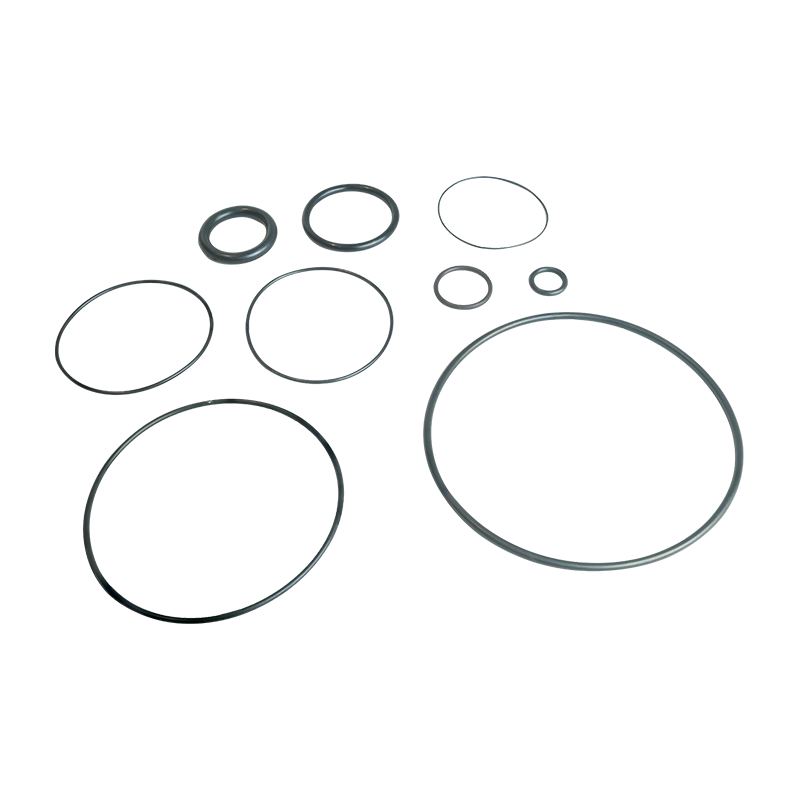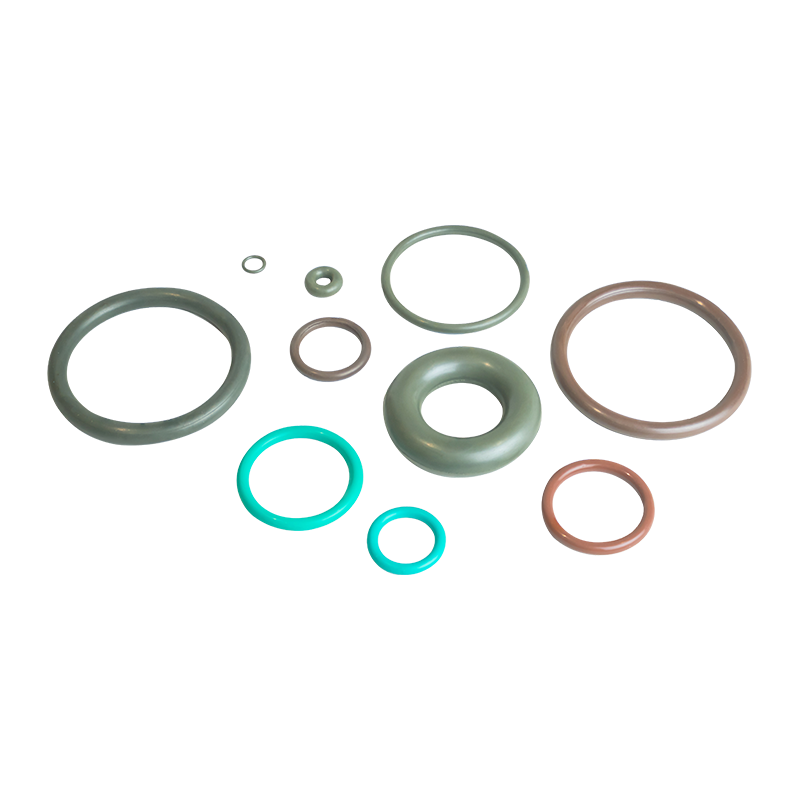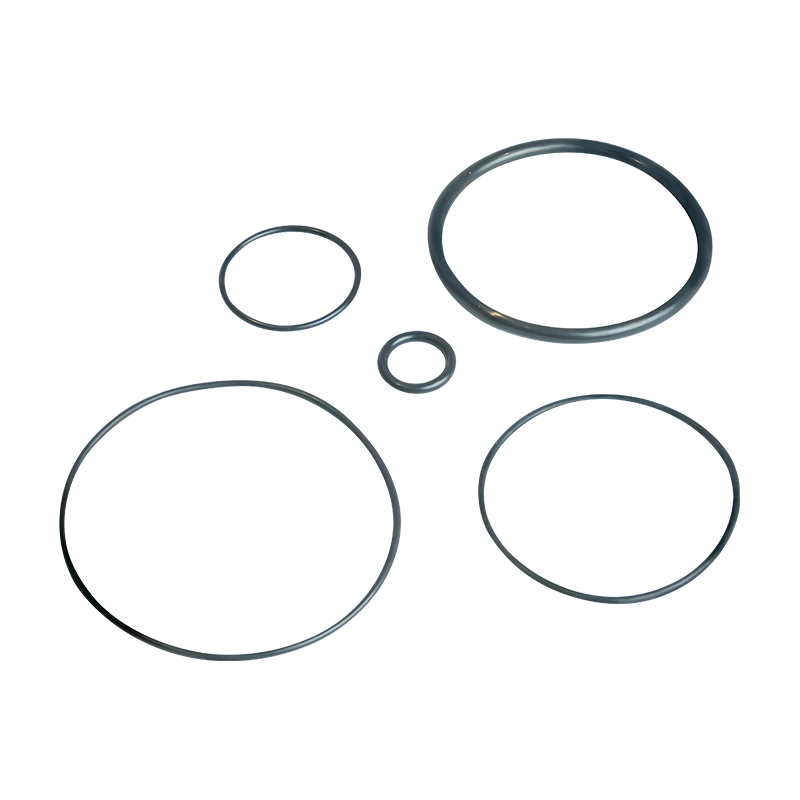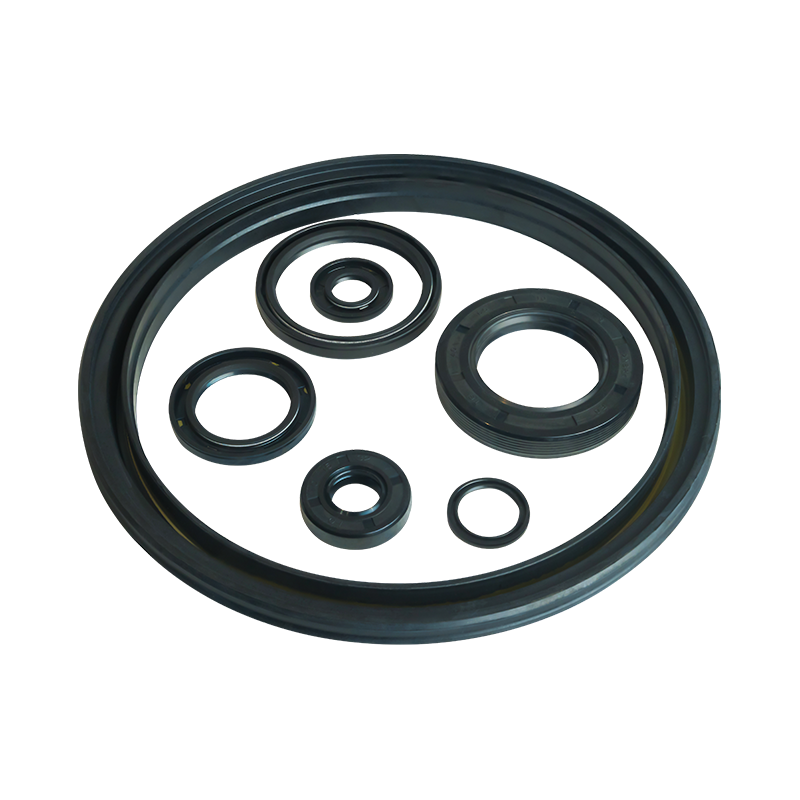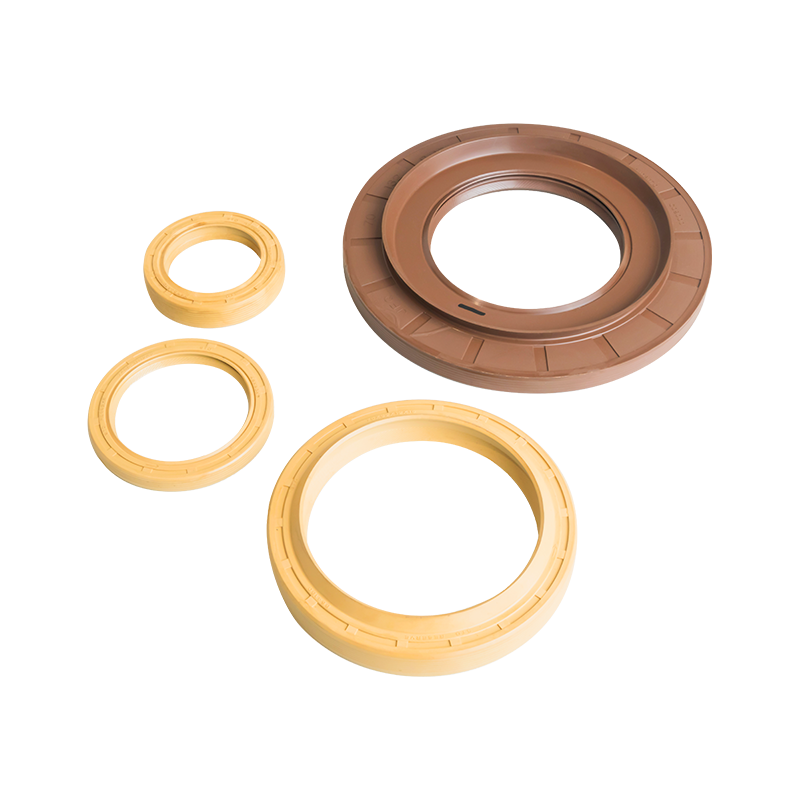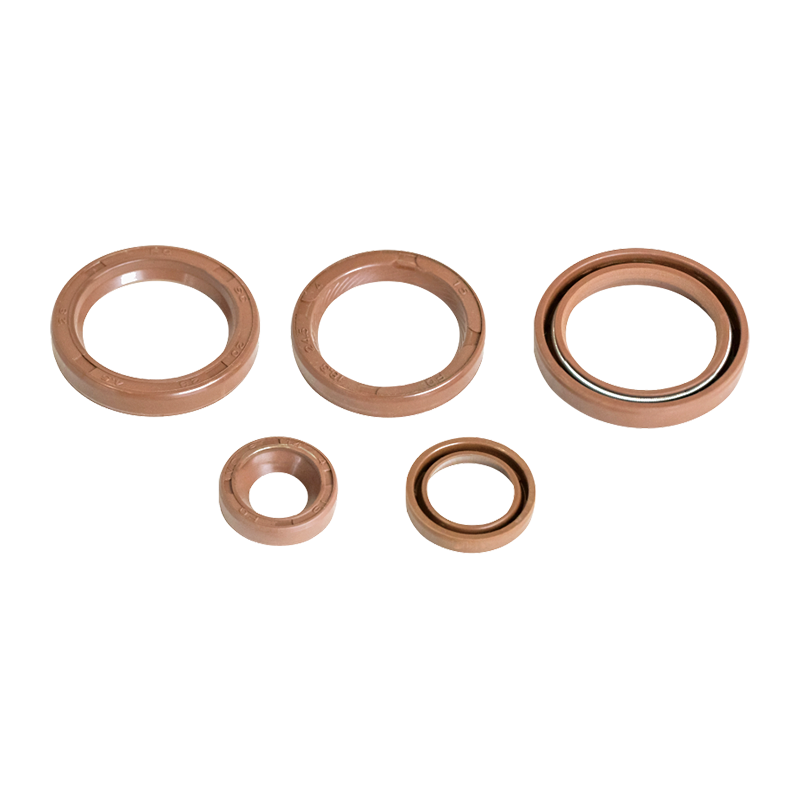What Makes the FAWDE PTFE Oil Seal Superior to Standard Rubber Seals?
In the intricate world of engine maintenance and repair, the humble oil seal plays a disproportionately critical role. It is the silent guardian tasked with containing lubricants, excluding contaminants, and maintaining pressure within an engine’s vital systems. For decades, standard nitrile rubber seals have been the default solution, performing adequately in a wide range of applications. However, the evolution of engine technology—demanding higher efficiencies, longer service intervals, and operation under more extreme conditions—has exposed the limitations of traditional materials. This has paved the way for advanced sealing solutions, chief among them being the fawde engine parts ptfe oil seal.
Understanding the Foundation: Material Science of PTFE vs. Rubber
To fully appreciate the advantages of the fawde engine parts ptfe oil seal, one must first understand the fundamental differences in the materials at play. The comparison is not merely between two different compounds but between two distinct classes of polymers with inherently different characteristics.
Standard rubber seals, most commonly made from Nitrile Butadiene Rubber (NBR), are elastomers. Their key property is elasticity; they function by maintaining a constant spring force against a shaft, creating a sealing interface through mechanical interference. This design is effective but comes with inherent limitations. Rubber is susceptible to degradation from heat, certain chemicals, and ozone. Over time, this degradation leads to the hardening, cracking, and eventual failure of the seal.
In contrast, Polytetrafluoroethylene (PTFE) is a high-performance fluoropolymer. It is not an elastomer but a thermoplastic known for its incredible chemical inertia and exceptionally low coefficient of friction. A fawde engine parts ptfe oil seal leverages these innate properties. Instead of relying solely on high radial force like a rubber seal, PTFE seals often incorporate a light spring load and utilize the material’s unique ability to transfer a microscopic layer of itself onto the mating shaft surface. This process, known as transfer film formation, creates a seal-between-seals scenario, drastically reducing friction and wear on both the seal and the shaft. This fundamental difference in material science and sealing philosophy is the root cause of PTFE’s superiority in demanding environments.
Performance Under Pressure: A Comparative Analysis of Key Properties
The theoretical advantages of PTFE material are realized in concrete performance benefits that directly impact engine reliability, efficiency, and total cost of ownership. The fawde engine parts ptfe oil seal excels in several critical areas where standard rubber seals are challenged.
Extreme Temperature Tolerance
One of the most significant limitations of nitrile rubber is its operational temperature range. Standard NBR seals typically perform reliably within a range of -40°C to 120°C (-40°F to 248°F). Beyond these points, the material begins to harden and become brittle at low temperatures or soften and permanently deform at high temperatures.
The fawde engine parts ptfe oil seal operates effectively in a vastly wider thermal window. PTFE can withstand continuous operation from -100°C to 260°C (-148°F to 500°F) without losing its structural integrity or sealing capabilities. This makes it an indispensable solution for high-temperature applications near turbochargers, exhaust gas recirculation systems, and in modern engines designed to run hotter for improved efficiency and reduced emissions. Conversely, its performance in cryogenic conditions ensures reliable sealing in cold-start scenarios that would cause a rubber seal to fail.
Unparalleled Chemical Resistance
Engines are harsh chemical environments. Lubricants are becoming more sophisticated, often containing aggressive additive packages. Furthermore, seals can be exposed to aggressive fuels, solvents, and acidic byproducts of combustion.
Nitrile rubber has moderate resistance to many oils and fuels but can swell, soften, or degrade when exposed to certain synthetic lubricants, transmission fluids, and chemicals. This degradation directly compromises the seal’s integrity.
The fawde engine parts ptfe oil seal is virtually inert. PTFE is resistant to almost all industrial chemicals and solvents, including strong acids and bases. This superior chemical resistance means it is immune to swelling and degradation from contact with any modern engine oil, synthetic or conventional. This property ensures a consistent seal throughout its service life and eliminates a common failure mode associated with rubber seals.
Exceptional Durability and Low Friction
Friction is the enemy of both efficiency and longevity. The high radial force required for a rubber seal to function creates significant drag on the rotating shaft. This parasitic drag translates directly into a minor but measurable loss of engine power and fuel efficiency. Furthermore, this constant friction, combined with heat, leads to wear on both the seal lip and the shaft itself, ultimately leading to leakage.
The fawde engine parts ptfe oil seal is engineered for low-friction operation. The PTFE material itself has the lowest coefficient of friction of any solid material. Coupled with the transfer film mechanism, it creates a sealing interface with minimal drag. The benefits are multifold:
- Reduced Wear: Dramatically lower wear rates on both the seal and the critical shaft surface, extending the life of both components.
- Improved Fuel Efficiency: The reduction in parasitic drag contributes to marginal gains in fuel economy, a critical factor for commercial fleets.
- Cooler Running: Lower friction generates less heat, reducing the thermal stress on the seal and the surrounding components.
Superior Performance in Challenging Conditions
Beyond temperature and chemistry, other environmental factors can compromise a seal’s function. Rubber seals are vulnerable to abrasive contamination. If dust or grit penetrates the seal lip, it can become embedded in the rubber, acting as a grinding tool that scores the shaft and accelerates failure.
The fawde engine parts ptfe oil seal is highly effective at handling contaminated environments. The hard, slick surface of PTFE does not easily allow abrasive particles to embed. Furthermore, the material’s resilience allows it to effectively exclude grit and dust, preventing it from entering the sealing interface and the engine system. This robustness makes it ideal for applications in construction, agriculture, and mining equipment where exposure to dirt and dust is inevitable.
Addressing the Application: Where the FAWDE PTFE Seal Excels
Understanding the performance characteristics allows us to identify the specific applications where specifying a fawde engine parts ptfe oil seal is not just an upgrade but a necessity.
- High-Performance and Turbocharged Engines: The intense heat generated by turbochargers is often beyond the limits of standard rubber seals. The PTFE seal’s high-temperature capability ensures reliable performance.
- Applications with Synthetic Lubricants: The widespread adoption of low-viscosity, high-additive synthetic oils can accelerate the degradation of nitrile rubber. PTFE’s chemical inertness makes it the only suitable choice.
- Environments with Shaft Imperfections: PTFE’s conformability and transfer film technology allow it to seal effectively on shafts with minor wear, scratches, or imperfections that would cause a rubber seal to leak. This is a significant advantage in remanufacturing and repair scenarios.
- Critical Systems Requiring Zero Leakage: For applications where even minor weeping or leakage is unacceptable, the precise and consistent sealing of a PTFE seal is paramount.
- Equipment Demanding Long Service Intervals: Machinery designed for extended maintenance periods requires components that can last. The superior wear resistance of PTFE aligns perfectly with these extended drain intervals.
Economic Considerations: Total Cost of Ownership
The initial unit cost of a fawde engine parts ptfe oil seal is higher than that of a standard rubber seal. A focus on this initial price alone, however, represents a short-sighted view. The true value is calculated through the lens of total cost of ownership.
When the superior durability, reduced downtime, and protection of expensive ancillary components are factored in, the economic argument becomes compelling. A failed seal does not just cost the price of a replacement; it costs labor for the repair, the engine oil lost, potential environmental cleanup costs, and the cost of downtime, which for a commercial fleet can be enormous. Furthermore, a leaking seal that goes unnoticed can lead to catastrophic engine failure due to oil loss, a cost orders of magnitude greater than the price of a premium seal. By preventing leaks, reducing the frequency of replacements, and protecting shaft surfaces, the fawde engine parts ptfe oil seal provides a significantly lower cost over the operational life of the equipment.
| Feature | Standard Nitrile Rubber (NBR) Seal | FAWDE PTFE Oil Seal | Advantage |
|---|---|---|---|
| Temperature Range | -40°C to 120°C (-40°F to 248°F) | -100°C to 260°C (-148°F to 500°F) | Superior performance in extreme heat and cold |
| Chemical Resistance | Moderate; susceptible to swelling from some synthetics | Excellent; virtually inert to all oils, fuels, and solvents | Compatibility with modern lubricants; no degradation |
| Coefficient of Friction | High | Exceptionally Low | Reduced power loss, improved fuel economy, less heat generation |
| Wear Resistance | Moderate; can wear shaft | Excellent; low wear on seal and shaft | Extended service life, protects critical components |
| Handling Contamination | Poor; grit can embed and score shaft | Excellent; slick surface excludes abrasives | Superior performance in dirty environments |
| Shaft Tolerance | Requires good surface finish | Tolerates minor imperfections and wear | Effective sealing on worn or imperfect shafts |
Sray up to date with allour recent products
- Address: No. 6 Yangsha Road, Chengbei Industrial Park, Huilong Town, Qidong City, Jiangsu Province China
- Phone: +86-13906283641+86-18934546679
- Fax: +86-0513-83698022
- Email: [email protected]




 English
English русский
русский 中文简体
中文简体

